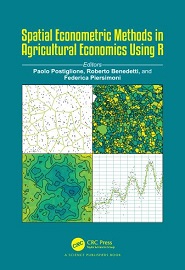
English | 2021 | ISBN: 978-1498766814 | 280 Pages | PDF | 10 MB
Tools such as GIS and remote sensing are increasingly being used in monitoring agricultural resources. As a result, there is need for effective methods for the collection and analysis of agricultural data with particular reference to space. Since land is a key resource in agriculture, most of the data collected are of spatial nature or can be related to a map through geo-referencing techniques of the statistical units. It is now a common practice in many countries that the state statistical agency geo-references typical sampling frames of physical or administrative bodies used in agricultural surveys, not only according to the codes of a geographical nomenclature, but also adding information regarding the exact, or estimated, position of each record. This information is used in agricultural economics to develop advanced models in spatial econometrics. The developments in GIS technology offer growing opportunities to agricultural economists to deal with large and detailed spatial databases, making it possible to combine spatial information from different sources and to produce different models, tabular, and graphic outputs. These tools allow the application of a wide range of operations to spatial information derived from different sources; though without considering the specific nature of the different typology of spatial data. Thus, such an automated process appears to be responsible for the tendency of many practitioners to neglect particularities of spatial data with respect to data stored in conventional databases.
This book attempts to describe the main typology of agricultural data, the most appropriate methods for the analysis together with a detailed description of the available data sources and their collection methods. Topics such as spatial interpolation, point patterns, spatial autocorrelation, survey data analysis, small area estimation, regional data modeling, and spatial econometrics techniques are covered jointly with issues arising from the integration of several data types.
HomepageResolve the captcha to access the links!